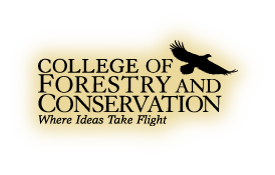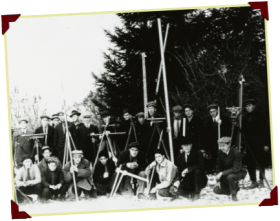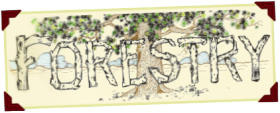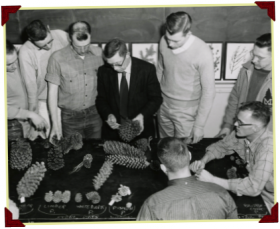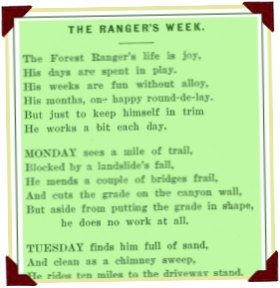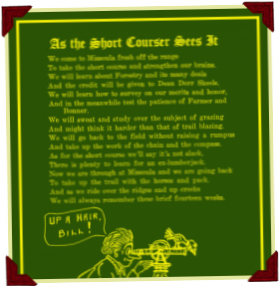The College of Forestry and Conservation
In 1905 the United States Forest Service was established and millions of acres of land in Montana became a part of the national forests. The government needed to hire professional foresters to oversee these vast tracks of land but at the time no training or classes in forestry were available in Montana. In October 1908, Clyde A. Duniway became president of the University of Montana and used his inaugural address to advocate for the establishment of forestry education at the university.
“We miss a splendid opportunity of service to the state as long as we fail to give professional training to our young men who are being attracted into the new field of forestry, which has for its object the conservation of our natural resources. The choice of Missoula as one of the great districts of the National Forest Service gives us a direct contact with this work second to none in the United States.”[1]
A few weeks after his address Duniway visited Washington D.C. and met with Chief Forester Gifford Pinchot about his desire to establish a formal forestry education program in Montana.[2] Pinchot endorsed Duniway’s idea and pledged the support of the Forest Service staff in Missoula.
In January 1909, in cooperation with the Regional Forest Service Office, the university started its first “Ranger School.”[3] Botany Professor James E. Kirkwood oversaw the school, which consisted of twelve weekly lectures by staff members from the regional office. The inaugural class included roughly twenty Forest Service employees from around the region. The government paid the school fees and salaries of rangers in the school. The following year the course had forty-two participants from national forests across the country.[4]
In the spring of 1910, the United States Treasury Department pulled funding for the ranger school.[5] Without government assistance, most of the rangers were unable to afford to continue the course and had to drop out.[6] Despite the cuts, the university refused to let the school die. President Duniway rallied support by writing in the student newspaper, “no other state has so excellent an opportunity for developing a good forestry school as Montana.”[7] With President Duniway’s approval, the university stepped in and provided faculty and additional funding for the ranger school.
By the spring of 1911, the university had taken over the day-to-day operation of the ranger school and opened the school up to all men over the age of nineteen.[8] Furthermore, they required no special prior training to register and charged no tuition for the course. In 1912, the course extended from six to twelve weeks, and upon completion students received a certificate from the university.[9]
On March 21, 1913, the state legislature of Montana authorized the creation of the School of Forestry at The University of Montana-Missoula and allocated $6,000 for salaries and supplies.[10] The new School of Forestry went beyond the short, job related courses of the ranger school to include botanical and biological components. The school focused on the West and its forest types and unique forest problems.[11] The School of Forestry formally opened on September 8, 1914, with twenty-five students.[12] In 1916, the school was re-organized into three departments: forestry, forestry engineering and the ranger course.[13] In 1927, the School of Forestry closed the ranger course due to low enrollment.
Throughout the 1920s and 1930s the School of Forestry grew and eventually provided the bulk of the summer work force for the Forest Service. Temporary student workers were the backbone of summer firefighting crews and visitor services programs. By the start of World War II, the majority of these trained men had enlisted in the military. To help the Forest Service staff the summer fire lines, the School of Forestry established a recruiting drive on campus encouraging students from all disciplines to spend the summer working in the forests.[14] In addition to helping staff the national forests, the School of Forestry also offered free classes to the public to help meet wartime labor needs.[15]
In 1946, a master’s degree program in forestry was established, and in 1964 the State Board of Education approved a PhD program. In April of 2003 the School of Forestry was renamed the College of Forestry and Conservation.[16] Today the college offers five undergraduate degree programs: forestry; parks, tourism and recreation management; resource conservation; wildlife biology and wildland restoration. The college offers graduate degrees in forestry, recreation management, resource conservation, systems ecology, and wildlife biology; and doctoral degrees in forestry, fish and wildlife biology and systems ecology.


